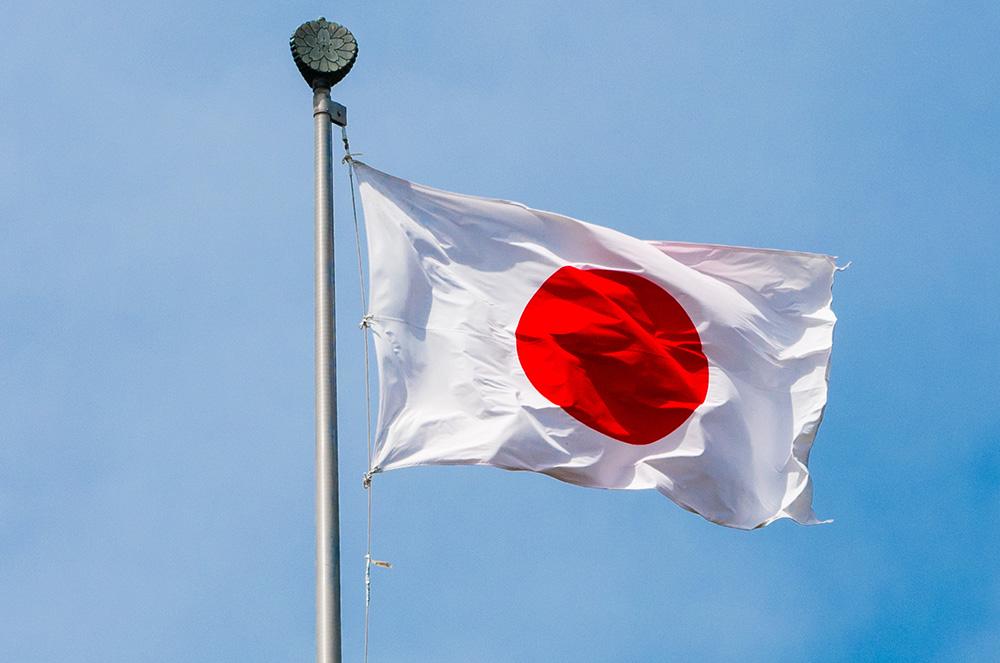
Japan political system
The Liberal Democratic Party dominated Japanese national politics for more than five decades. The LDP had been governing the country since the year 1995 with brief interludes. The LDP’s reign came to an end in August 2009, and it has lost its long hold on power. Even if The LDP had previously lost power in the 1993/94 elections, it had the highest number of members in parliament and was able to exercise influence over the then coalition government. The 2009 loss to The Democratic power was, therefore, the most devastating defeat for The LDP party. It not only lost to The Democratic Party of Japan (DPJ), but it also lost almost two-thirds of the seats it controlled in the lower house of parliament. The DPJ became the largest party in parliament and chose two small parties as coalition partners to secure an ultimate majority in the upper house of parliament.
The DPJ's road to power was long and chaotic. The party faced several severe challenges including internal wrangles and successive electoral defeats. Four factors contributed to the eventual success of the DPJ: Its highly adaptable and flexible ideology made it possible for the party to absorb political groups with diverse interests; other opposition parties failed to unite and stay together making it impossible for them to win the LDP; lack of internal organization within the LDP made it impossible for the LDP to offer attractive leaders and visions, and introduction of a mixed-member majoritarian electoral system in the lower house facilitated competition of the major parties at the district level.
The Democratic Party of Japan
The DPJ was formed in the mid-1990s. It was formed due to the introduction of a mixed-majoritarian electoral system in the lower house in 1994, which compelled smaller parties to unite. After several negotiations had been held, The DPJ was eventually formed in September 1996 by fifty-seven members of the lower house, with 35 members defecting from The Social Democrats and 15 members defecting from the New Party Harbinger. The members financed the party from their own pockets because the party failed to secure state subsidies immediately.
After formation, the DPJ became the third largest party in the lower house trailing The NFP and The LDP. Hatoyana Yukio and Kan, who had defected from the NPH, became the co-leaders of The DPJ, and they envisioned it as a citizen-oriented party in terms of organization and policies. The two leaders and members of the party failed to agree on whether the party should be a vehement opponent of government policies or whether the party should cooperate with the government so as to have an avenue for influencing legislation. There were also differences in the relationship between the party and the unions and the allies of the party in the Diet. Internal wrangles continued to fester within the party making progress very difficult. It became increasingly difficult for the co-leaders to work together necessitating the election of one leader. The issue was resolved in 1997, when Kan was elected as the sole leader of the party.
Political analysts dismissed The LDP as an ad-hoc outfit which had been formed to unite a critical number of members of the lower house before the next general elections were held. In spite of the criticism, the party managed to stay together until 1998 when the NFP was dissolved giving the DPJ a chance to absorb some of the splinter parties. The merger took place in April 1998 leading to the birth of the “new” DPJ. The party’s first leader was Kan Naoto. The merger made The DPJ the largest opposition party, but the party chose to identify itself as the third force in Japanese politics behind the SDP and The LDP. The aim of defining itself as the third force was for the party to protract an image of an alternative to the mainstream established parties. The party combined European socialism and liberalism with a strong commitment to protect free market economics and protect the human rights of the citizens. It took a multi-literalist approach to security and foreign affairs.
During the 1998 upper house elections, the DPJ garnered nine more seats while LDP suffered a loss as it was unable to garner the requisite numbers to form a majority. The opposition parties came together and voted the DPJ leader, Kan, as prime minister. The LDP, however, used its majority in the lower house, and the LDP leader became the new prime minister. In spite of the setback, the fact that opposition parties voted Kan as prime minister gave The DPJ the status of a strong opposition party. DPJ took advantage of the fact that The LDP lacked a majority in the upper house and influenced legislation aimed at resurrecting the weak financial system of the country. The DPJ spearheaded important legislative initiatives and demonstrated to voters that it could do more than mere obstruction of government policies. In 1999, the DPJ’s dream of joining forces with other parties to form a grand coalition opposition was shattered when the LDP joined forces with two minor opposition parties and regained control of the upper house.
The DPJ focused on consolidation of its position as the main challenger of The LDP. The party frequently proposed alternative bills to counter those presented by the ruling party in its endeavors to become known and recognized in the public arena. The party created shadow cabinets to demonstrate that it had the capacity to run a government. The attempts to gain public trust were undermined by visible internal wrangles within the party regarding issues such as participation of Self-Defense forces in UN pace keeping missions, anti-terrorism legislation, and the future of US-Japan relations, administrative reform, and constitutional reform. Wrangles regarding the party’s relationship with unions also continued to simmer. The DPJ leadership tried to resolve the internal wrangles using various strategies and initiatives, but the disunity remained unabated, and the public continued questioning the ability of the party to govern. The party underwent numerous changes of leaders leading to further deterioration in the level of public trust in the party. Kan was ousted due to an extra-marital affair while subsequent leaders faced various challenges regarding their capabilities to govern.
The party managed to stay together due to the unity of the lower house members who resolved that it was better to stick together. Break-ups within other opposition parties and the poor leadership of the LDP between 1998 and 2001 facilitated defections to The DPJ. In the 2000 general election, The DPJ garnered 32 more seats and increased its membership to 127 showing that, despite internal wrangles, it could bank on significant support from independent voters. The election also brought out the fact that The DPJ lacked significant support in rural areas.
The Democratic Party of Japan in 2001
The DPJ faced a major challenge in 2001, when Koizumi Junichiro became the leader of the LDP and the prime minister. He enacted major reforms and revived the fortunes of the LDP which absorbed many non-aligned voters in the party. He became very popular, and riding on his popularity the LDP was able to garner a large majority in the upper house. The LDP performed dismally in the election as it only gained 3 additional seats and it lost support in urban strongholds such as Osaka and Tokyo, which were charmed by Koizumi's popularity. The prime minister instituted most of the agendas that the DPJ had in mind making it very difficult for the DPJ to oppose the policies and present itself as a viable opposition party. The DPJ lacked an avenue to prove ways in which its government would be different from that of The LDP. The DPJ began pursuing integration with other opposition parties such as the liberal party. The merger failed to go through, and the DPJ party leader resigned for failing to consult other party members before pursuing the decision. Kan returned to the helm of the LDP and successfully sought the merger with the Liberal Party. The DPJ abandoned its center-left ideology due to absorption of conservative parties and individuals and became a centrist party. In the 2003, general elections, the LDP won 30 additional seats bringing its membership in the lower house to 177 behind The LDP’s membership of 237. For the first time since its formation, the party won more proportional votes than the LDP, and it re-acquired its urban strongholds. It advocated an end to bureaucratic and centralist politics, and capitalized on populist promises, as well as pragmatic policies.
Kan relinquished leadership of The DPJ due to being involved in a scandal. In 2005, The DPJ suffered a major loss as the prime minister called a snap election in which he orchestrated a masterful campaign delivering a landslide victory for The LDP. The DPJ lost over 60 seats in the lower house while The LDP almost attained a two-third majority. In 2006, Ozawa defeated Kan and took over the leadership of the party. The DPJ had a relatively easy time because Aba Shinzo, the prime minister who took over the leadership of The LDP from Koizumi, was weak and ineffective. He focused on political ideologies rather than on the bread and butter issues that voters wanted addressed. He faced scandals involving losses of pension data, as well as personal scandals among cabinet ministers.
Ozawa capitalized on the government weaknesses, and The DPJ won massively in The 2007 Upper House election. The win was an eye-opener because the influence of The DPJ had spread to the rural areas. Rural voters were angered by The LDP because the reforms instituted by Koizumi had hampered rural economies. The DPJ enticed more public support by promising income support for agricultural households, child allowance, and pension benefits for all people regardless of availability of data. The DPJ failed to influence legislation, but it managed to stall most of the bills proposed by the government, and it consistently criticized all decisions made by the government. For unknown reasons, Ozawa entered into an agreement to form a coalition with the ruling LDP party. The decision was protested by DPJ members who had not been consulted. The decision did not go through, and Ozawa was re-elected as the party leader in 2008 but had to resign due to a scandal involving mismanagement of funds. He was succeeded by Hatoyama.
The public desired to see change in Japanese politics. The DPJ has changed the benchmark of its campaign during the 2009 elections. The party enjoyed a sweeping victory garnering 308 seats in the lower house, a remarkable improvement from the 112 seats it held. The landslide victory enjoyed by The DPJ was catalyzed by the fact that LDP never recovered its popularity after Koizuma’s departure. Voters had also become increasingly disillusioned with the reforms that had been initiated by Koizuma who was blamed for increased social inequalities in Japan. Support for The LDP in rural areas weakened. DPJ strategized and availed attractive candidates in both rural and urban areas. Discontent with the incumbent LDP government boosted chances of take-over by The DPJ. Under the leadership of The LDP, Japan’s status as a super-economy in the world had declined as by 2000, the country was ranked third in the world in terms of GDP, but by 2007, the GDP had reduced drastically and the country was ranked number nineteen in the world.
The DPJ’s manifesto helped it to formulate a national brand of politics which enabled the party to attract support from all parts of the country. DPJ candidates used the same agenda at campaign rallies protracting a positive image of the party. It warned its candidates against bad-mouthing LDP candidates or candidates of any other party. The DPJ based its campaign on the policy agenda and creation of an impressing of modernity and vitality. It also fielded more female and youth candidates ensuring that older and hereditary candidates were comparatively less in number. The 2009 election led to the biggest transformation of the composition of the lower house since the year 1947. DPJ garnered 143 out of the 158 new comers in The Diet. Due to the role Ozawa had played in strategizing the influence of The DPJ, the prime minister made him the secretary general of the DPJ, and he continued to yield massive influence in the party and Japanese politics.
The DPJ’s organizational structure had a massive impact in the style of leadership the new part exercised. The party congress was the supreme body of the party. It was tasked with the duty of making decisions, and it was comprised of regional delegates and Diet members. The secretaries general had powers to administer the party, coordinate nomination of candidates, and coordinate the finances of the party. Upon the appointment of Ozawa as the secretary general, powers of the secretary general were extended, and he was given powers to determine priorities for the national budget as well as to appoint deputy secretary generals to handle policies.
After coming into leadership, the party failed to fulfill its vision of having network based organization bringing together politicians, social movements, and citizen groups. The DPJ was also faced by the challenge of factional leadership since most of its members were members of other small parties. Factions caused different positions on issues such as a constitutional amendment, military profile, foreign relations, and economic policies. The party was able to stay together due to distribution of positions based on the principle of balancing all the factions. Due to liberalism, the party had been able to be adaptable and flexible enough to accommodate various interests and political factions.
Focus on protection of human rights, as well as decentralization reforms endeared The DPJ to the public. The party also adopted a globalist approach to security and foreign affairs, and it came up with ideas on expansion of the social security system. Its economic policy was market-friendly and it achieved deregulation, attraction of foreign investment to Japan, reduction of the discretionary powers exercised by Japan’s national bureaucracy, as well as the elimination of wasteful spending on public-works. Even though some of The DPJ’s key policies had formed part of the government agenda during Koizumi's reign, the DPJ differentiated itself by entrenching human rights, social safety, and clamoring for a foreign policy and security policy detached from Strong US influence. The members of the party failed to agree on whether The Japanese Self Defense forces should engage in collective self-defense.
Most members of the DPJ did not exhibit strong nationalistic positions and acknowledged that Japan was the aggressor in the Pacific war though its participation had been mistaken. Most of the members also supported the establishment of a secular war memorial to replace the Yasukuni shrine. Significant changes also occurred in relation to replacement of traditional tactics of voter mobilization with new methods of mass participation. The new strategies opened new avenues through which voters can influence policy making and politics. Individual politicians changed their perceptions about the responsibilities and obligations they owe to their constituents.
The decentralization reforms introduced by The DPJ opened opportunities for massive political participation. Local citizen movements began relying on administrative reforms to exert influence over local and national elites. Recalls, referendums, and anti-party movements spread making politicians be more accountable and reliable. The government became more inclusive, more transparent, and more responsive. Lack of the conservativeness that dominated during The LDP era increased political access and visibility of people from all regions in the country.
The DPJ manifesto had five main guiding principles which proclaimed the desire of the party to exercise responsible political leadership to overcome bureaucracy and improve the standards of living of Japanese people. The Japanese economic and political system, which has served the nation well for several decades, became dysfunctional due to the uncertain and complex economic and political environment in the 1990s. The system posed hurdles for Japan’s enterprising exporters.
During the campaign, the DPJ emphasized on the need to improve the living standards and change the regime The DPJ had to reform the system of government by strengthening the cabinet so as to weaken the bureaucracy that has characterized governance in Japan. To fulfill its manifesto, The DPJ had to introduce a top-down government system headed by the cabinet to enable the government and the party to control and regulate the budget and the budgetary allocations. The widespread collaboration between politicians and bureaucrats was cut down during The DPJ’s era. The power that was previously held by the bureaucracy was vested in the party as was seen by extension of the powers of the party’s secretary general. The DPJ came up with a policy that subordinated the roles played by the bureaucracy and the Diet to the cabinet and the party to produce a more dynamic system of governance. The main aim of changing the political system was to eliminate the over-reliance on the individual capabilities of the prime minister. The party intended to integrate the civil service into the decision making process rather than rely on politicians or political appointees for the benefit of the country.
The importance of the cabinet in decision making was highlighted by the fact that cabinet appointees were announced five days after the election results. The Hatoyama-led government immediately abolished the meetings that used to be held by vice ministers from the bureaucracy. The government also put in place regulations and rules governing politicians and bureaucrats. The regulations banned attempts by bureaucrats to manipulate Diet members and required bureaucrats to obtain consent from the Diet before consulting ministers. Bureaucrats were also required to save and retain records relating to contracts, licenses, or subsidies, and other related documents made by back benchers or their aides.
The DPJ gave cabinet ministers the power to choose their own parliamentary secretaries and deputy ministers, unlike under The LDP reign whereby factions within political parties were responsible for sub-cabinet appointments. The DPJ also abolished the policy research council upon taking over power clearly illustrating that the cabinet would be superior to the party’s decision making organs. Ozawa’s appointment to the position of secretary general was an attempt to neutralize the role played by the Diet since Ozawa was made responsible for election strategy and Diet affairs. Ozawa gained veto power, which under The LDP government was exercised by bureaucrats. Ozawa was given extensive power to coordinate and distribute the political funds of the party, appoint the leaders of the upper and lower houses, and assign committee positions. Giving Ozawa extensive responsibilities gave him the power to punish Diet members who did not toe the line and reward those who toed the line. Ozawa was given extensive power without checks and balances and given his controversial and influential nature he could either strengthen or weaken the party.
The ministry of Finance cooperated with The DPJ government, but the government faced challenges in dealing with the ministries of health, labor and welfare, as well as infrastructure, transportation, and tourism; forestry and fisheries, and agriculture, which had enjoyed extensive power and control under The LDP government. The ministries had also enjoyed protection from scrutiny by rebellious factions within The LDP. The DPJ government made a proposal to replace subsidies in the agricultural sector with an income support scheme to remove the discretion and power exercised by the ministry of Agriculture, Forestry, and Fisheries. The ministry had viciously opposed the proposals by The DPJ even before the election through statements made by the ministry’s administrative vice minister who had termed the proposals unrealistic. Hatoyama responded to the minister’s statements by claiming that in a country like Britain, the bureaucrat would have been fired immediately. It became clear that The DPJ would handle bureaucratic opposition by demanding the resignation of rebellious bureaucrats. The bureaucrats were only retained in the government on condition that they would not oppose the policy agenda of the party.
The DPJ was ambitious in implementation of administration reform but was derailed by the difficulties and uncertainties of the policy-making culture in Japan. It was faced by the challenge of developing a sustainable framework achieving economic growth while at the same time reducing the debt burden incurred by the LDP government as well as ensuring provision of adequate social safety to all persons. The focal points of its manifesto such as Employment and Economy; Decentralization; pension and Health Care; and Child Raising and Child Education were noble projects, but finding the money to finance them posed various challenges. The idea to provide child support until middle school was intended to have a positive effect on birth rate and domestic consumption.
The income-support agricultural plan intended to compensate farmers if the selling price of a product fell below the cost of production, and it provided a laudable way of supporting the country’s shrinking and aging farming population. The party had also drafted excellent proposals for reforming the health-care and pension systems, which were the top priorities for most Japanese voters. The party’s proposals were strong on safety nets, but they were very weak on fiscal reform and economic growth. The party recognized the need for Japan to shift from reliance on export-dependent growth which made Japan vulnerable to economic crises and recessions in countries such as America. The party, however, failed to come up with a balanced economic growth strategy which would focus on increasing domestic consumption of goods and services so as to incorporate the savings bank reserves and domestic households into the economy.
The DPJ had also made promises regarding recalibration of The Japan-US relationship and the country’s post war foreign policy and security set-up. According to Article 9 of the country’s constitution, Japan had renounced war and use of force in settlement of international disputes and Japan would not be allowed to maintain air, sea, or land forces. In 1951, Japan signed a treaty with The United States which provided that the US would defend Japan against any external aggressors in exchange for which Japan would allow its military bases to be used by the US military for Japan’s defense and maintenance of security and peace in The Far East. The agreement made Japan depend on The US for security and follow The US approach to foreign policy blindly since it did not have any alternative. Under the leadership of Hatoyama, the DPJ intended to develop a foreign policy centered on the East Asian community with Japan taking a central position in the leadership alongside South Korea and China. Hatoyama had pledged to relocate some US marine bases outside their regions of operation or completely outside the country. The promise had endeared the DPJ to the residents of the areas in which the US military bases are located.
After the elections, there were positive signs that The DPJ would implement the key promises that had been made in its manifesto. The Transport ministry illustrated that the government was keen on eliminating wasteful spending of public resources on infrastructure by issuing orders for termination of the Yanba dam project. A more assertive foreign policy was adopted since the DPJ government issued orders requiring closure of the refueling mission of The Marine Japan Self Defense Forces by 2010 in spite of the fact that the United States opposed the decision. Senior politicians were empowered at ministerial levels so as to reduce the power exercised by bureaucrats.
Despite starting on a positive note, the DPJ government encountered substantial challenges. Hatoyama failed to relocate the US military base as he had promised and failed to give other credible alternatives for relocation. It proved increasingly difficult to curb the influence of bureaucrats over the decision making process. The party had inexperienced members given that approximately 140 of them had been elected for the first time. Since the new members could not out-maneuver the bureaucrats, the DPJ had to rely on the bureaucracy to push its agenda and manifesto. The efforts were met by resistance from the bureaucracy leaving the new politicians struggling with high volumes of work load. Factional divisions over economic policies and the US-Japan relations continued to cause internal wrangles within the DPJ.
Failure of Hatoyama to relocate the military base led the SDP faction to pull out of the DPJ. Hatoyama was compelled to resign by the Ministry of Economic, Trade, and Investment and The Ministry of Foreign Affairs as his approach to foreign policy aggravated The United States. Leadership wrangles ensued between Kan and Ozawa as both of them wanted to take over the party’s leadership. Kan won the leadership contest and worked on improving the relationship between the US and the bureaucracy. Doing so meant that Kan had to renege on most of the key promises made in the manifesto regarding foreign policy and administration reform. Divisions within the party continued being unabated.
On 11th March 2011, Japan was hit by a major earth quake resulting in a tsunami and the Fukushima Nuclear Disaster whack leaving thousands of people missing and dead. The public was dissatisfied with the manner in which The DPJ administration handled the disaster leading to a conception that the party’s leadership was inept and could not combat national problems as well as internal problems within the party. Kan resigned from premiership due to low ratings, and Ozawa also resigned from the party to form a new political party. The leader who succeeded Kan, Yoshihiko Noda, was unable to restore public confidence in the party. The DPJ lost the 2012 general elections to the LDP which came back to power after trouncing the DPJ in a landslide win.




